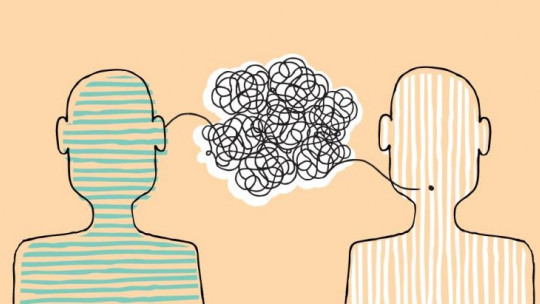
Knowing how to convince someone is not easy because, in the first place, to achieve this we have to reject an idea that we usually take as valid naturally: that persuading simply consists of providing coherent and logical arguments. To influence other people, whether they are men or women, clients, friends or family, you have to go beyond the rational.
It is true that to change the opinions of others it is necessary to give them a new perspective on reality that is functional and does not make them feel ignorant, but there are many more elements at play. Many of these elements, furthermore, are anything but logical.
In this article we will see what are the keys to take into account to make our attempts to convince someone as efficient and effective as possible. Of course, the possibility of modify another person’s beliefs It’s not up to us alone, but we can play our cards skillfully to maximize our chances of success.
How to convince others effectively
If you are interested in having clear guidelines on how to convince someone, follow the following basic principles.
1. Always be clear about who you want to convince
There are people who approach debates and exchanges of opinions as if the objective was simply to make truth prevail over falsehoods. That is, with a goal stated in the abstract, in which true information, by the fact of being true, always ends up convincing everyone who is listening. However, this is a mistake if what we want is not simply to feel morally superior to someone but to truly convince.
Try to change the mind of the person we are talking to It is not the same as trying to influence the beliefs of the public observing a discussion in which we participate In the second case, those who want to win over the public use their opponent’s speech in their favor, without waiting for it to change to get closer to their own, but rather taking advantage of their position to transmit a message. Thus, in these cases what is transmitted is not simply what one says, but the whole formed by what one says and the way in which the opponent reacts to it.
For example, exposing the inconsistencies of what the other says and drawing attention to the fact that they do not allow corrections can be explained as a symptom that they do not understand what is being talked about. This strategy, on the other hand, would be erroneous if we wanted to convince that person, since the effect of this is for him to adopt a more defensive attitude, making it more difficult for him to change his mind due to cognitive dissonance. We will talk about this below.
2. Beware of cognitive dissonance
Although it may seem paradoxical, being aware of clear signs that we are wrong in holding ideas that we identify with, It usually makes us hold on to those erroneous beliefs even more, in a more irrational and uncritical way than at the beginning. That is, knowing more (by knowing the limitations of what we thought we knew) makes us know worse.
The reason for this is that if the clash between one’s own idea and another new or foreign one is presented in a very clear and direct way, we prefer to “cheat” to avoid having to deal with uncertainty of not knowing which opinion is really the one we should defend. Thus, we can act as if we really do not doubt what we believe and live in that comfortable fiction.
Therefore, to convince someone you have to try not to present the dialogue as a battle of egos. What apparently is a clear defeat and humiliation does not translate into convincing someone, but rather the opposite occurs; If we “win” in that way, it is most likely that we will simply be canceled for another future conversation, since that person will have labeled us as a defamer or demagogue.
Much more useful than that is not to arrive arrogantly affirming great truths, but to face the debate in a collaborative way. Without hiding that from the beginning they think differently, but trying to make the conversation something constructive that serves both parties. From this principle, treating those who disagree with us with respect, the appropriate thing is to introduce these people to doubts about what they think they know, while offering explanations or alternative positions that help reduce the uncertainty that has just been exposed.
3. Show your limitations
To be skilled at convincing someone, something that is very powerful is talking about your own ignorance. If we say directly that we do not know certain things, as long as they are not central topics of the debate, we reveal a special kind of authority: that of the person willing to honestly transmit their gaps in knowledge, so that knowing them the rest can decide whether to join that position or not.
4. Appeal to real life
Unless it is a discussion of deeply philosophical topics, avoid arguing based on abstractions: Always speak based on specific real or imaginary facts, even if it is to give examples. In this way the practical meaning of your position is shown, and it becomes evident that you do not speak from a place of detachment from your own ideas.








